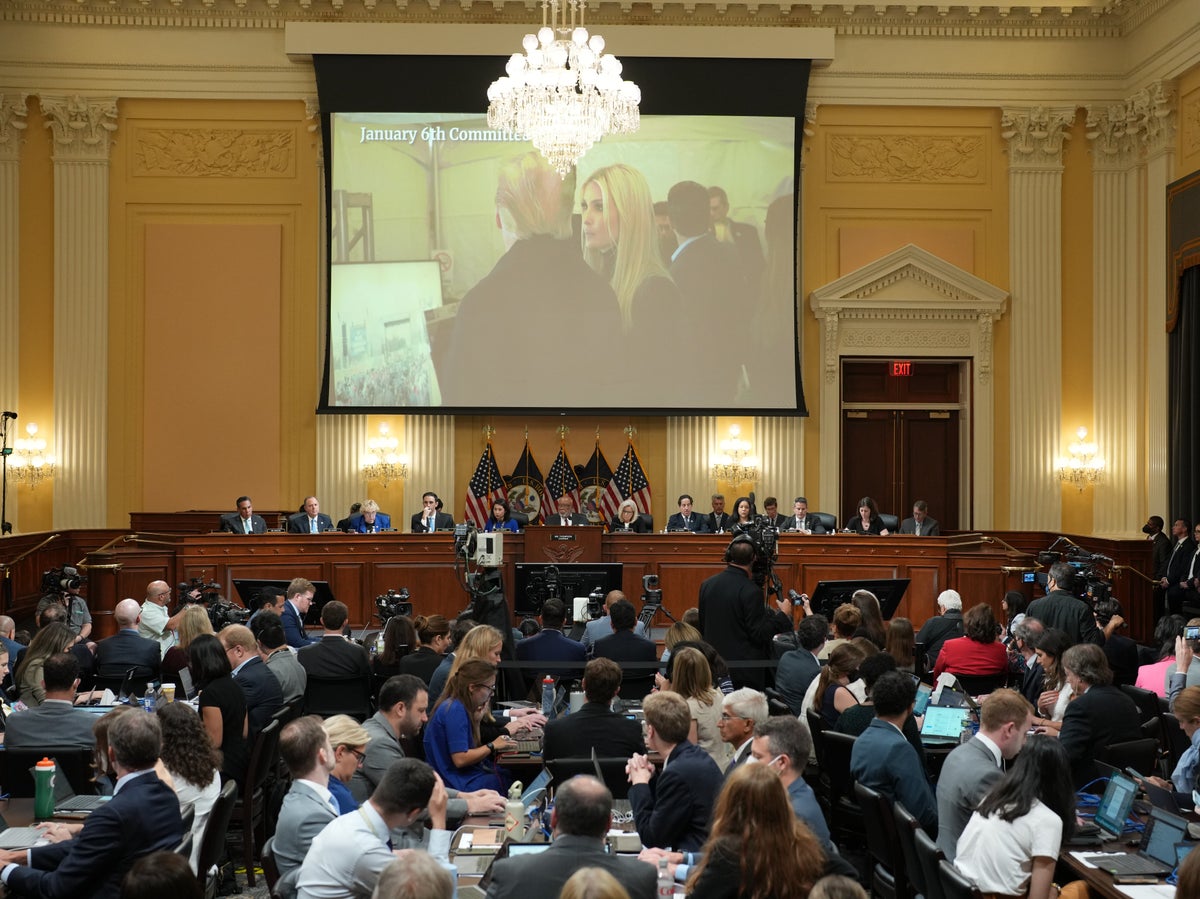
Former president Donald Trump planned to order the riotous mob he’d brought to Washington to march on the US Capitol on January 6, just as Congress was meeting to conduct the final certification of his loss to Joe Biden, according to evidence presented by the House select committee.
The committee revealed that it had obtained White House records and other evidence showing Mr Trump’s intent to order such a march, including a draft of a tweet in which he would have told his 80 million Twitter followers that his speech at the rally was to be followed by a march to the Capitol.
Members also presented text messages between rally organisers which showed they were aware that Mr Trump planned to exhort his supporters to march the 1.8 miles between the White House and Capitol, and that they understood that Mr Trump’s call for a march was to be kept under wraps.
One rally organiser, Kylie Kremer, sent a text to MyPillow CEO Mike Lindell two days before the rally in which she said Mr Trump would “call for it [the march] unexpectedly”.
The Tuesday afternoon hearing, the select committee’s seventh session since it began presenting its findings to the public on 9 June, focused on how the mob that carried out the attack on the Capitol began to come together on 19 December 2021 — when Mr Trump called for a “wild” protest on the day Congress was set to finalise his defeat at the hands of Joe Biden.
He tweeted: “Statistically impossible to have lost the 2020 election. Big protest in D.C. on january 6th. Be there, will be wild.”
It served as a clarion call to myriad right-wing extremists, with many calling for violence on such sites as TheDonald.win, Twitter, Parler, and 8chan.
One pro-Trump YouTuber known as “Salty Crackers” opined that there would be horrific violence that day.
“This is going to be a Red Wedding going down on January 6,” he said, referring to a bloody massacre depicted in the Game of Thrones television series.
Another pro-Trump extremist commentator, Matt Bracken, said the US would “only be saved by millions of Americans moving to Washington, occupying the entire area, if necessary storming right into the Capitol”.
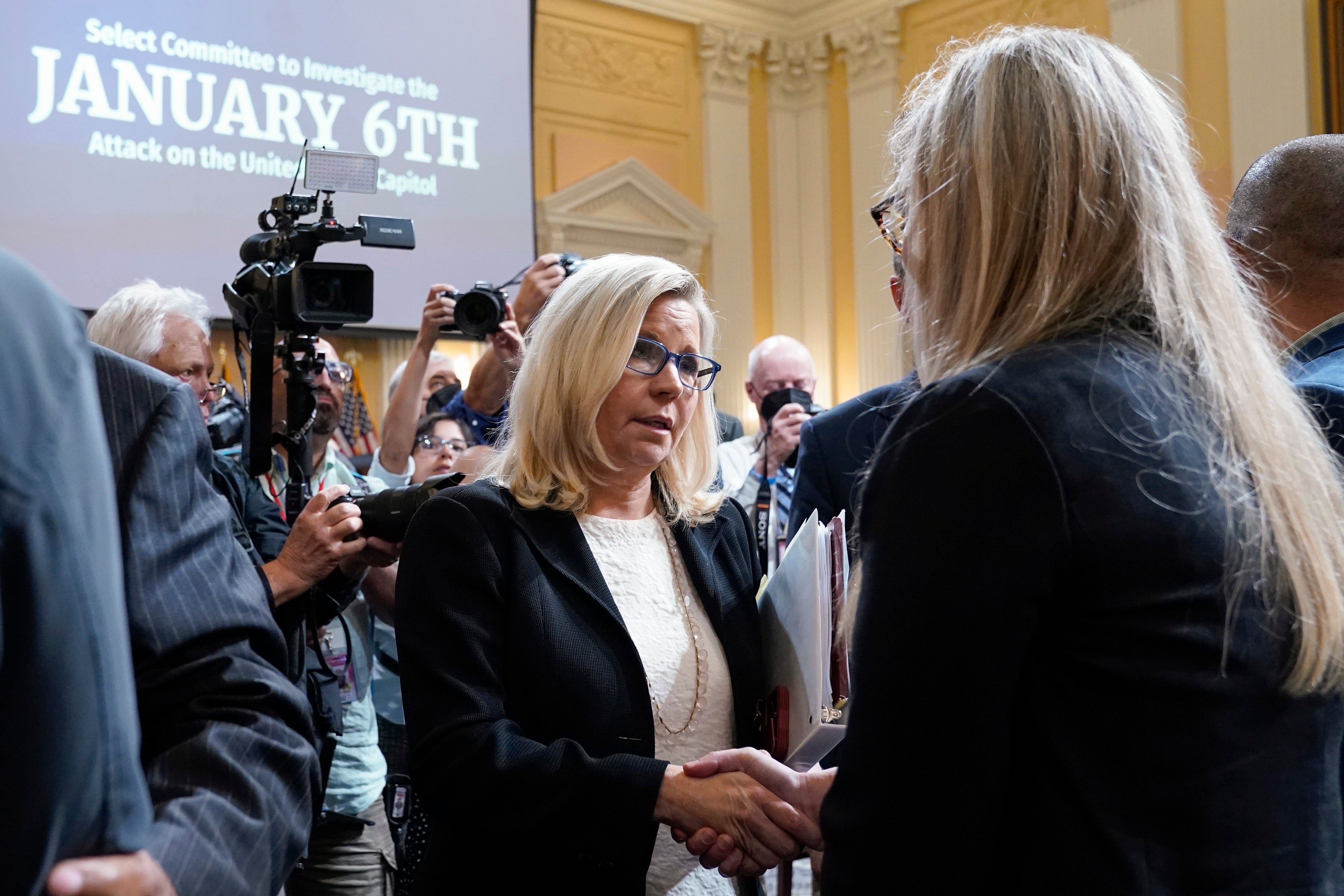
Tim Pool, a popular pro-Trump YouTube commentater, said in an episode of his show the day after the tweet that 6 January could be Mr Trump’s “last stand”.
“It’s a time when he has specifically called on his supporters to arrive in DC. That’s something that may actually be the big push. Trump supporters need to say this is it. It’s now or never,” he said.
Rioter speaks out
Steven Ayres, a convicted January 6 rioter who testified in person before the panel on Tuesday, said “everybody thought” Mr Trump “was gonna be coming down” to the Capitol that day.
“He said in his speech, you know, kind of like he’s gonna be there with us,” he said. “The president got everybody riled up, and told everybody to head on down, so we basically were following what he said.”
The select committee also showed evidence that pro-Trump, right-wing extremist groups such as the Proud Boys began planning for violence after Mr Trump sent out his tweet calling for supporters to come to Washington.
Representative Jamie Raskin, a Maryland Democrat and former constitutional law professor, said Mr Trump’s call to the mob was the embodiment of the “American carnage” he spoke of during his January 2017 inaugural address.
“American carnage, that’s Donald Trump’s true legacy. His desire to overthrow the people’s election and seize the presidency interrupted the counting of electoral college votes and for the first time in American history, nearly toppled the constitutional order and brutalized hundreds and hundreds of people,” he said.
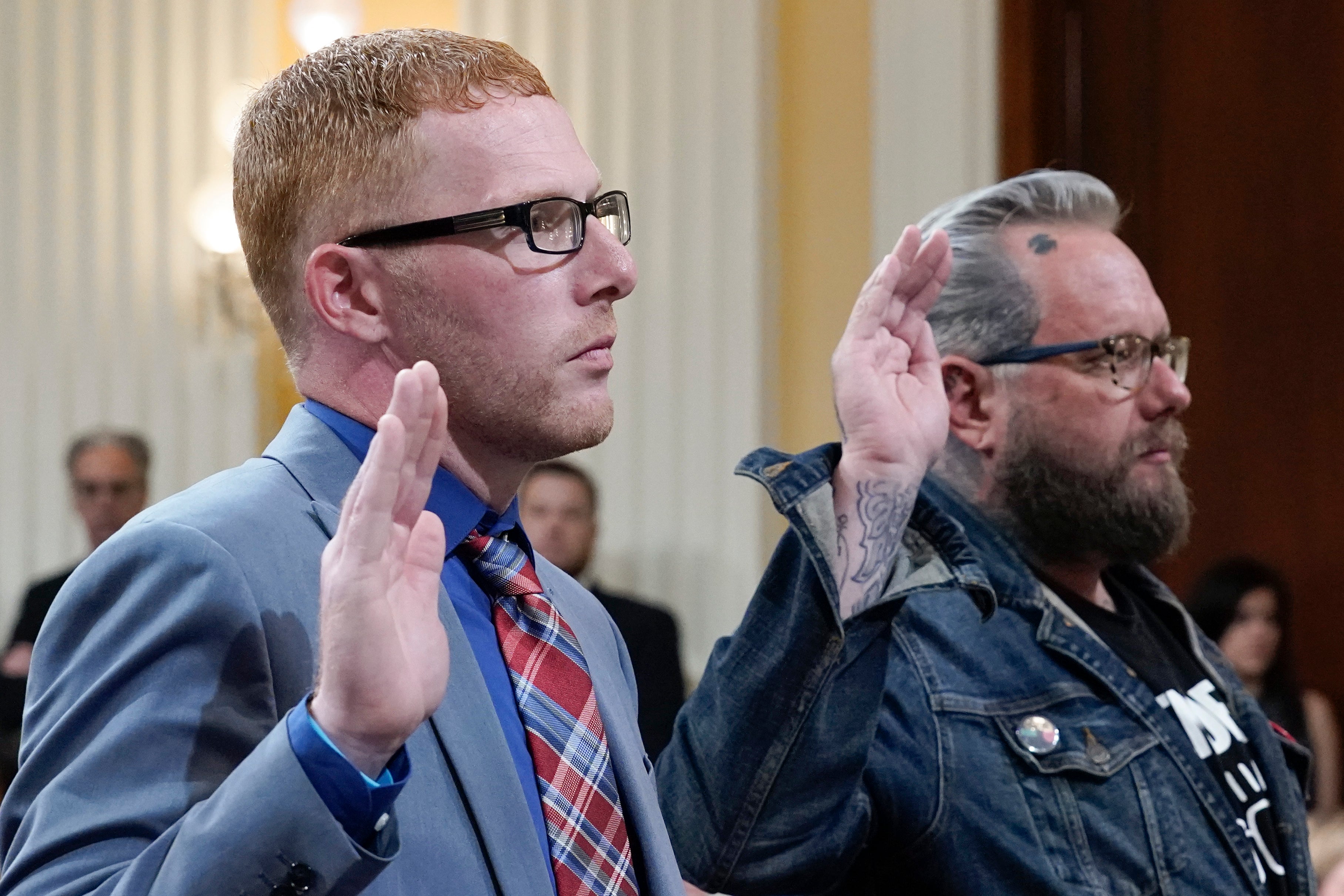
Mr Raskin said separate right-wing violent extremist groups — including the Oath Keepers and Proud Boys — began coordinating the efforts after Mr Trump called for the “wild” protest on 6 January 2021, through a group chat associated with longtime Trump ally Roger Stone. Another Oath Keeper, Kelly Meigs, called then-Proud Boys leader Enrique Tarrio the afternoon after Mr Trump sent the tweet.
In a videotaped deposition excerpt, Kellye SoRelle — an attorney with ties to the Oath Keepers and the Trump 2020 campaign – confirmed that Mr Stone had been a “centre point” for extremists’ planning in the days leading up to the attack on the Capitol.
That planning continued among various pro-Trump extremists, some of whom had direct contact with the president.
According to White House phone logs presented by the committee, former White House chief strategist turned podcast host Steve Bannon spoke with Mr Trump multiple times on 5 January, including before he told podcast listeners that “all hell [was] going to break loose” the next day.
Oath keepers
Jason Van Tatenhove, a former member of the Oath Keepers who briefly served as the group’s spokesperson and also testified before the panel on Tuesday, said the Oath Keepers saw in Mr Trump a path to legitimacy as a paramilitary militia meant to serve him personally.
He said Elmer Stewart Rhodes, the group’s founder, often talked about using violence against elected officials, particularly Democrats, and once asked him to design a deck of cards featuring prominent Democrats modeled off the one used by US forces during the 2003 invasion of Iraq, for use in some future conflict.
“He wanted me to create a deck of cards that include different politicians, judges, including and up to Hillary Clinton as the Queen of Hearts,” he recalled.
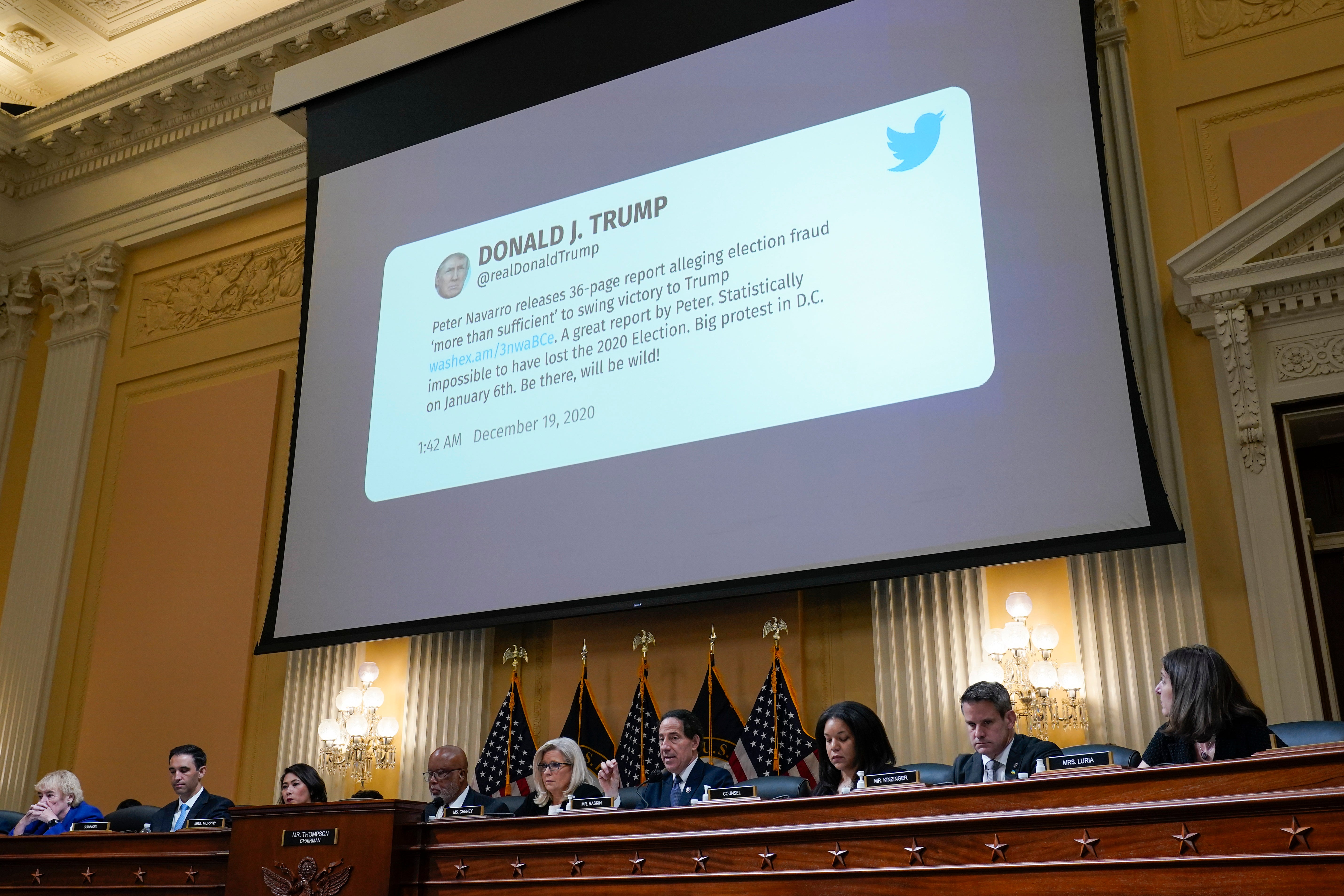
Mr Van Tatenhove, who has since renounced the right-wing extremist group, said he fears for the future of the US if Mr Trump returns to power.
“I do fear for this next election cycle because who knows what that might bring if if a president that’s willing to try to instill and … encourage ... whip up a civil war amongst his followers using lies and deceit and snake oil,” he said. “What else is he going to do? If he gets elected again, all bets are off at that point”.
Mr Raskin, who along with Florida Representative Stephanie Murphy led the panel’s presentation of evidence, told reporters after the hearing that groups such as the Oath Keepers and Proud Boys could be violating existing US laws banning private militias, but said the panel may recommend changes to the law to strengthen such prohibitions.
“There are groups that are operating as private militias — which is against the law in 50 states, and it should probably be against the law at the federal level, too. The Constitution gives Congress the power to regulate and organize militias, and there's no such thing as a private militia,” he said. “Either you're a state-authorized militia or you're not, and it is against the law to hold yourself out as a militia in the States. So that's one thing we definitely need to work on”.
Conspiracists Oval Office meeting
The hearing also featured a series of other bombshells, including an account of a now-infamous Oval Office meeting between Mr Trump and a coterie of conspiracy theorists — including Sidney Powell, ex-national security adviser Michael Flynn, Trump attorney Rudolph Giuliani, and Overstock.com CEO Patrick Byrne. The meeting, at which Ms Powell and Mr Flynn pushed for Mr Trump to use the Defense Department to overturn the election, so alarmed one White House staffer that she texted a deputy White House chief of staff to tell him there was a “brawl” happening in the office and warn him that the “west wing [was] unhinged]”.
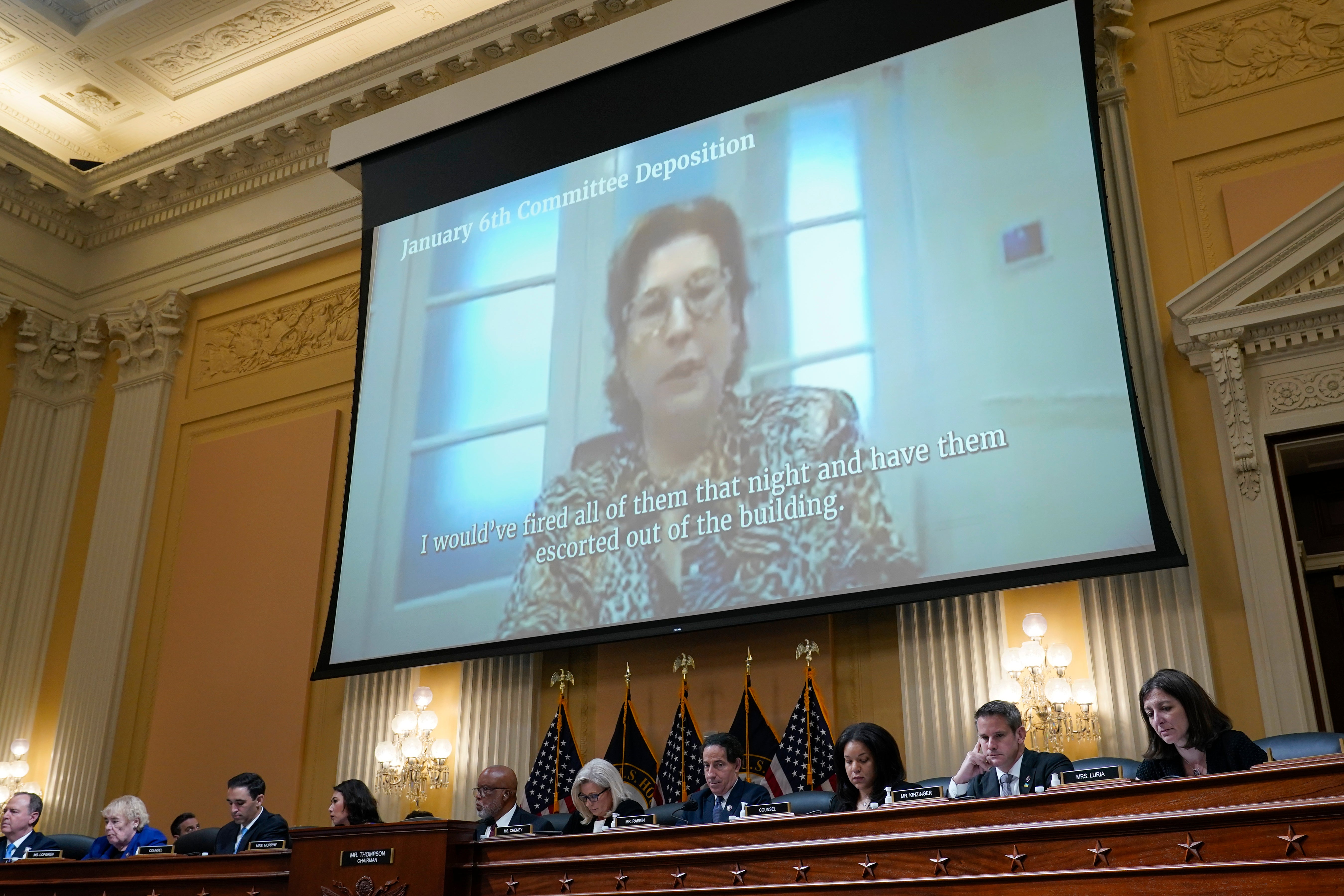
Former White House Counsel Pat Cipollone, who also attended the meeting, told the panel in a videotaped deposition that he witnessed Ms Powell — a Texas-based attorney who is current facing disbarment proceedings — push for Mr Trump to appoint her as a special counsel and order the seizure of voting machines. He told the panel he disagreed with both ideas.
“That’s not how we do things in the United States. There’s no legal authority to do that,” he said in another excerpt from his deposition. He added that it was “a terrible idea”.
Ivanka testimony
Excerpts from videotaped depositions played during the hearing showed that multiple Trump administration officials such as former Labor Secretary Eugene Scalia, ex-Attorney General Bill Barr, former White House Counsel Pat Cipollone, former Deputy White House Press Secretary Judd Deere, former White House Press Secretary Kayleigh McEnany, and even Mr Trump’s own daughter and senior adviser Ivanka Trump, said they understood that Mr Trump’s loss was official and that he should concede after the electoral college met on 18 December 2020.
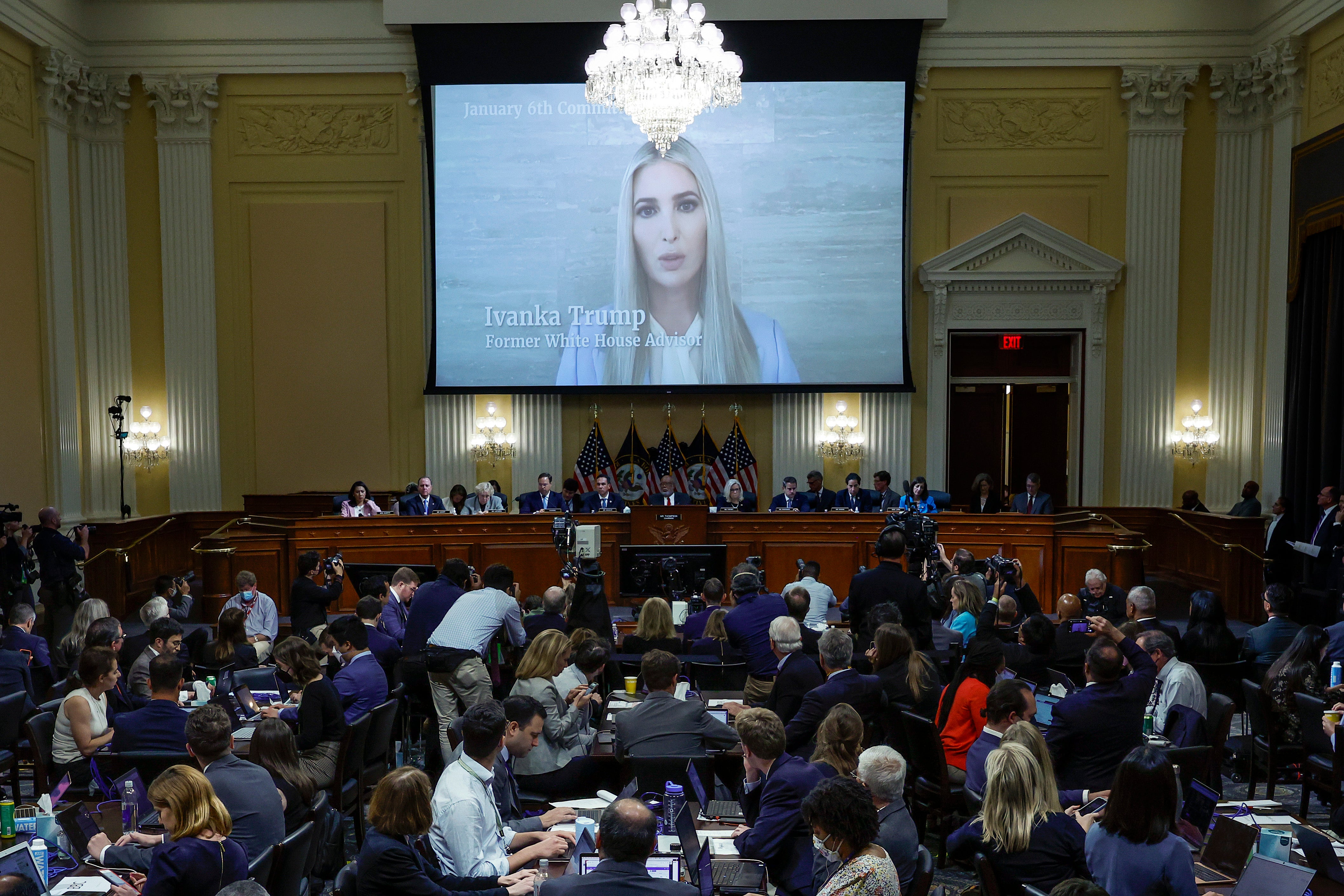
Representative Liz Cheney, the panel’s vice-chair, said “no rational or sane person” could have disregarded all the evidence showing that Mr Trump had lost the election.
“President Trump is a 76-year-old man. He is not an impressionable child. Just like everyone else in our country, he is responsible for his own actions and his own choices,” she said.
Ms Cheney also said Mr Trump recently attempted to contact a witness whose testimony has not yet been seen by the public.
“That person declined to answer or Trump’s call, and instead alerted their lawyer to the call, and their lawyer alerted us,” she said. “This committee has supplied that information to the Department of Justice. Let me say one more time: We will take any efforts to influence witness testimony very seriously”.







